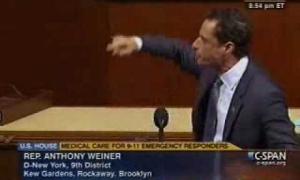Speaking Platform Profile: City Club of Cleveland:
August 31, 2008
From the archives of The Influential Executive, 9/2008
Speeches delivered at this influential forum go far beyond Ohio via broadcast, podcasts and web-casts.
By Thomas Daly
I’m often asked, “What are the criteria for getting a speech accepted into Vital Speeches of the Day?” It is not just who gave the speech, but what is said and how broad an audience it covers. I have turned down speeches by well-known CEOs because of the narrow, self-promotional topics. In interviewing Jim Foster, president of City Club of Cleveland, I have discovered that we look for the same things in selecting speeches. The City Club wants speakers who use their knowledge and experience to enlighten the audience. For example, if you have a CEO who runs “Widget Inc.,” he shouldn’t speak just on what goes on in his company but should talk about the overall Widget industry and what it has to do with us.
Add the fact that the City Club of Cleveland does not assert a position on either side of any issue. It serves as a forum and facilitator of issues presented by the speakers and challenges them with thought-provoking questions from the audience.
City Club of Cleveland was established in 1912 and is the oldest, continuous public affairs podium in the country. Even during times when a number of ethnic and religious groups were being discriminated against, the City Club remained open to Italians, Chinese, Jewish people and blacks. It has 86 programs a year. The programs are picked up and rebroadcast by radio stations, podcasts and webcasts. So the overall audience can include over a million people.
The two principles that have set the foundation for the City Club’s long existence:
- It doesn’t take sides on any issue.
- Speakers can say anything they like as long as they answer questions from audience.
Some notable speakers include Carl Camden, CEO of Kelly Services:
Beyond any doubt, corporate America, the media, government, academia, and other institutions are making well-documented progress on meeting statistical diversity targets.
Please notice that in this excerpt from Camden’s speech given July 25, 2008, that there is not one men-tion of Kelly Services. He is taking his knowledge and expertise and applying them to a broad spectrum that would be interesting to the audience.
At City Club, a program board decides what speakers are ac-cepted. In applying to speak, Foster says simpler is better. E-mail a description of the speech subject and the speaker to [email protected], call 216-621-0129 or mail to: The City Club, 850 Euclid Ave, Cleveland, OH 44114
But I believe that success may be dulling our critical faculties. I believe that statistical progress is masking the fact that we’re actually becoming quite mediocre as a country when it comes to true diversity—that is, diversity of thought and experience, or what many people call “inclusion.” So today, let’s take a hard look at how we define diversity in the U.S.; talk about the perils of a “diversity by the numbers” approach; and explore the challenges that U.S. companies face in rethinking diversity in a truly global marketplace.
Let’s start by looking at the current state of diversity in the U.S. Three main points come to light: that we’ve generally limited our definitions of diversity to structural diversity—that is, “diversity by the numbers”; that socioeconomic status is a critical yet largely ignored aspect of the diversity discussion; and that many of the largest global companies are led by executives and corporate boards that are strikingly monocultural.
First, let’s look at structural diversity, or diversity by the numbers.
Structural diversity has consistently evolved over the past 40 years. In the ’60s, the leadership of Cesar Chavez and Dr. King emerged. The committee on Equal Employment Opportunity was created. The Civil Rights Act was signed. The National Organization for Women was established, and the Gay Rights Movement began.
“In the ’70s, Affirmative Action led to affirmative procurement, and the minority business development movement began.
The ’80s heralded the appointment of the first woman Supreme Court justice, Sandra Day O’Connor. And, Geraldine Ferraro became the first woman vice-presidential candidate, while Douglas Wilder was elected as the first post-Reconstructionist African-American state governor.
In the ’90s, Congress passed the Americans with Disabilities Act, President Clinton authored the “don’t ask, don’t tell, don’t pursue” policy, and Prop 209 passed in California.


